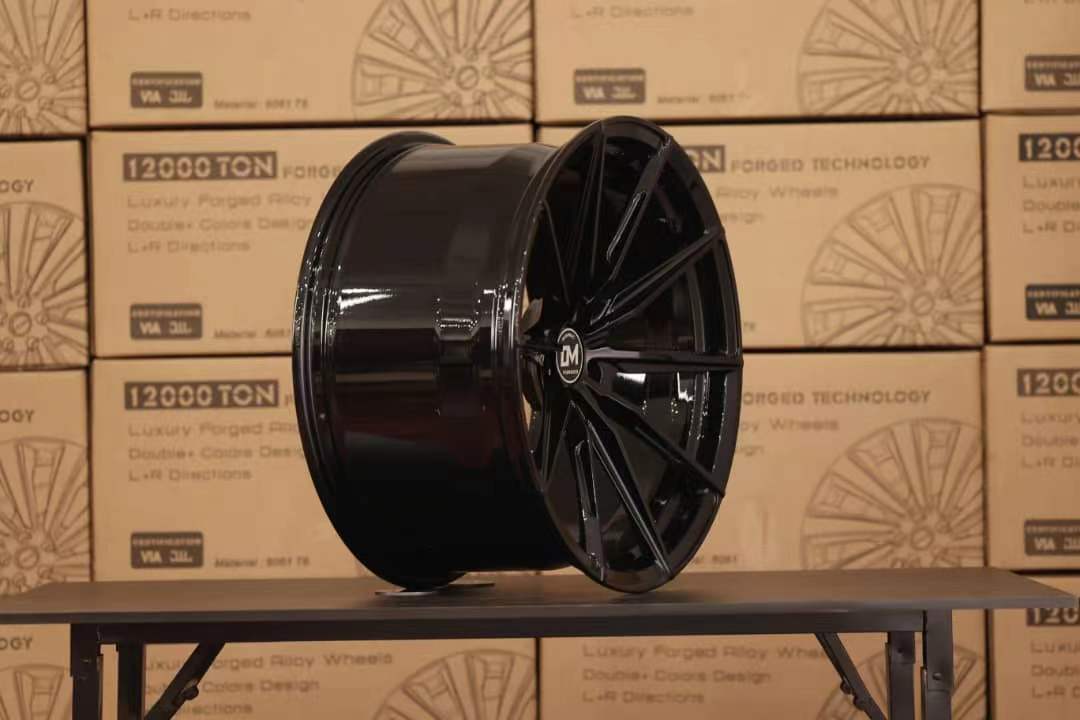Principios básicos, proceso y medidas de prevención de defectos en el forjado de llantas de aleación de aluminio
The wheel hub is one of the important components in the automotive drivetrain system, which needs to be not only aesthetically pleasing but also sufficiently safe.
Currently, most automotive wheel hubs are made of aluminum alloy, and the use of steel hubs is decreasing. Compared to steel hubs, aluminum alloy hubs have the advantages of being lightweight, reducing fuel consumption, and exhibiting excellent mechanical properties, thus improving the vehicle’s performance.
Aluminum alloy hubs can be divided into forged aluminum alloy hubs and cast aluminum alloy hubs. Cast aluminum alloy hubs are prone to defects such as shrinkage, porosity, and inclusion, which reduce the mechanical performance of the product.
On the other hand, the production process of forged aluminum alloy hubs avoids these defects and greatly improves the mechanical performance of the product. Therefore, forged aluminum alloy hubs are increasingly favored in the market, and vehicles equipped with forged aluminum alloy hubs are selling better. This article discusses the forging process, forming defects, and formation mechanism of aluminum alloy wheel forging.
Basic Principles and Process of Aluminum Alloy Wheel Forging
Basic Principles
Forging aluminum alloy wheel hubs is a pressure processing method that uses the plastic deformation of metal to obtain products with a certain shape while improving the mechanical properties of the metal. The basic principle involves heating a short bar and placing it into the corresponding mold. It undergoes pressing by a rotary forging press, initial forging press, and final forging press. Finally, it goes through trimming and hole expansion to complete the forging process.
Raw Materials
The raw material for forging aluminum alloy wheel hubs is continuous cast bar stock. The aluminum alloy grades include series 6 and series 7, and commonly used bar diameters are 7 inches, 8 inches, 9 inches, 10 inches, and 14 inches.
Process Flow
- Sawing: Cut the 6-meter-long bar into short bars according to the required lengths using a sawing machine.
2. Billet Heating: Place the short bars into a billet heating furnace and heat them to a temperature of 460°C to 480°C. The billet furnace generally has three heating zones, and the temperature setting may vary depending on the equipment, as long as it ensures the desired billet discharge temperature.
3. Mold Heating: Heat the rotary forging, initial forging, and final forging molds. The temperature upon removal from the furnace is preferably controlled between 420°C and 450°C. In winter, the workshop temperature can be increased by 30°C to 40°C.
- Lubrication Manipulator: The front end of the lubrication manipulator is equipped with a spray disk used to lubricate the molds. The spray disk is divided into an upper surface and a lower surface, typically consisting of five zones on the upper surface and four zones on the lower surface. Special molds may require corresponding spray disks or zoning. An oil-based forging release agent is used for mold release.
2. Rotary Forging: Using a 300-ton forging press, the short bars are clamped by the first manipulator and placed into the rotary forging station, where they are rotated according to the predetermined process parameters to form a disc.
3. Initial Forging Press: Using a 6,000-ton or 10,000-ton forging press, the disc is held by the second manipulator and placed into the initial forging press. After the pressing process, the initial forging is formed. The initial forging process is a critical step in the forging production, as it involves significant deformation and is where most defects occur.
4. Intermediate Heating Furnace: The second manipulator transfers the initial forging to the entrance of the intermediate heating furnace. The intermediate heating furnace operates automatically for material loading and unloading. Each batch of material can hold 8 to 16 pieces, and the discharge temperature can be controlled between 380°C and 460°C.
5. Final Forging Press: Using a 6,000-ton or 10,000-ton forging press, the third manipulator receives the signal from the intermediate furnace, retrieves the material, and places it into the final forging press. After the pressing process, the final forging is formed. The final forging process is the shaping step in the forging production.
6. Trimming Press: Using a 600-ton forging press, the third manipulator places the final forging onto the transfer platform. Then, the fourth manipulator retrieves the final forging from the transfer platform and places it into the trimming press. The forging process is completed through hole expansion and trimming.


